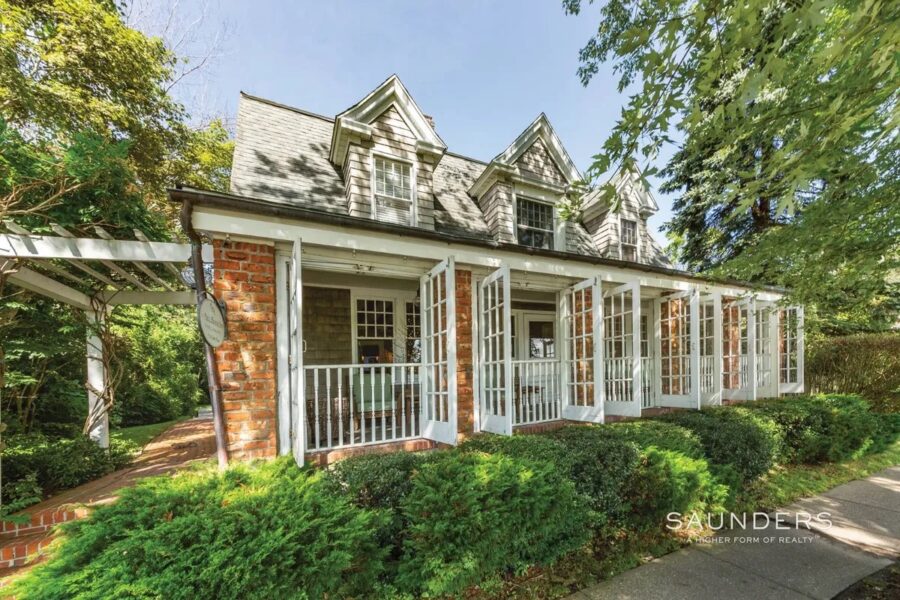
East Hampton’s Mill House Inn is a cornerstone of the village’s rich and vibrant history. This charming property, which has seen more than two centuries of East Hampton’s evolution, offers a unique glimpse into the past. Currently available for sale, listed exclusively with Sarah Minardi, this historic and iconic property presents an unparalleled opportunity for future investment.
The Mill House Inn’s story begins in 1790 with the Parsons family, who built the original Salt Box style home, echoing the architectural charm of East Hampton’s iconic Home Sweet Home. Over the years, the property expanded and evolved, reflecting the needs and aspirations of its various owners.
In 1851, after the shipwreck of the Catherine off the Amagansett coast, Col. William D. Parsons offered a rescued Irish immigrant, Patrick Lynch, a job on his farm. Lynch accepted, altered his westward plans for the gold rush, and instead put down roots in East Hampton. By 1860, Lynch had purchased the home and transformed it into a community hub, especially for local Catholics. With no Catholic church in the area, Lynch’s home became a makeshift place of worship, hosting services that drew farmers and even the former First Lady, Julia Gardiner Tyler.
The Lynch family’s hospitality extended beyond religious gatherings. With the arrival of the railroad in the late 19th century, they began accepting boarders, officially launching the Mill House Inn as one of the Hamptons’ earliest inns. The property continued to welcome guests through various owners, each adding their touch to its rich legacy. Major renovations in 1890, 1994, 2002, 2005, and 2011 modernized the inn while preserving its historic charm.
A quirky piece of the inn’s history involves its address. In the process of purchasing the inn in 1999, the owners had to change the address from 33 to 31 North Main Street at the fire department’s request. Three years later, the house behind the inn was also renumbered from 33A to 33, further cementing the property’s unique character.
In the late 20th century, the inn’s original barn found a new home with Adelaide de Menil, an eccentric and affluent art collector. De Menil moved the barn to her oceanfront property on Further Lane, creating a living museum for artists and writers. When she sold her estate in 2006, she generously donated the historic buildings to East Hampton Town, integrating them into the new Town Hall complex.

Today, the Mill House Inn stands as a testament to East Hampton’s layered history. As Sarah Minardi, the current listing agent, notes, “The Mill House Inn is a living piece of East Hampton’s history. This sale offers a rare chance to own a part of our village’s past while investing in its energetic future. It’s a unique opportunity to continue the legacy of hospitality and community that has defined this special place for over two centuries.”
The Mill House Inn is a historical treasure, inviting new owners to join its enduring story in the heart of East Hampton.












